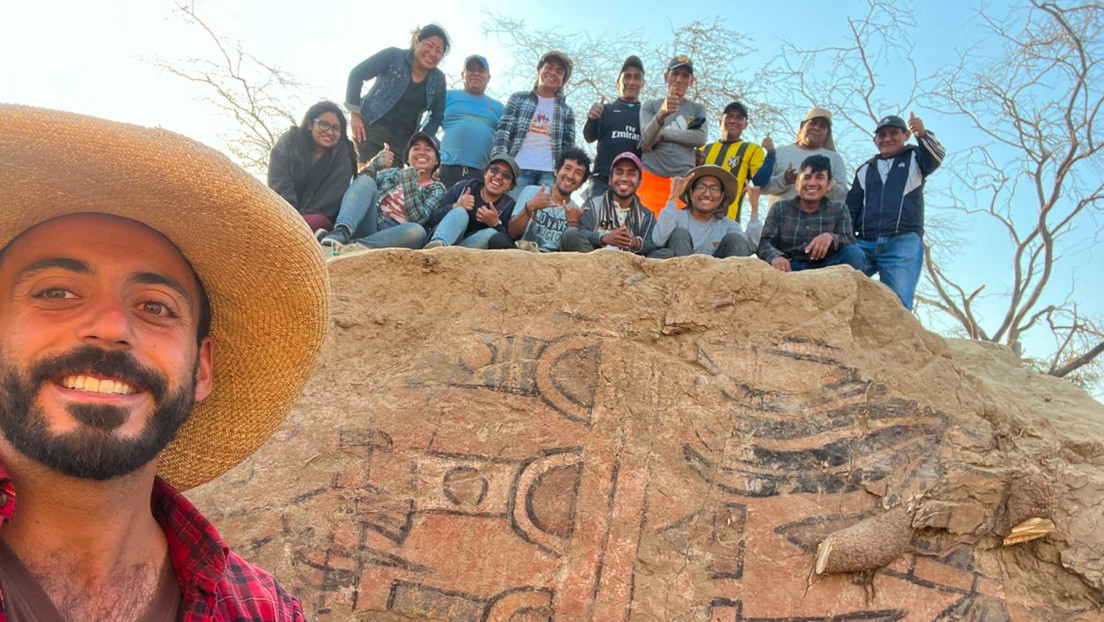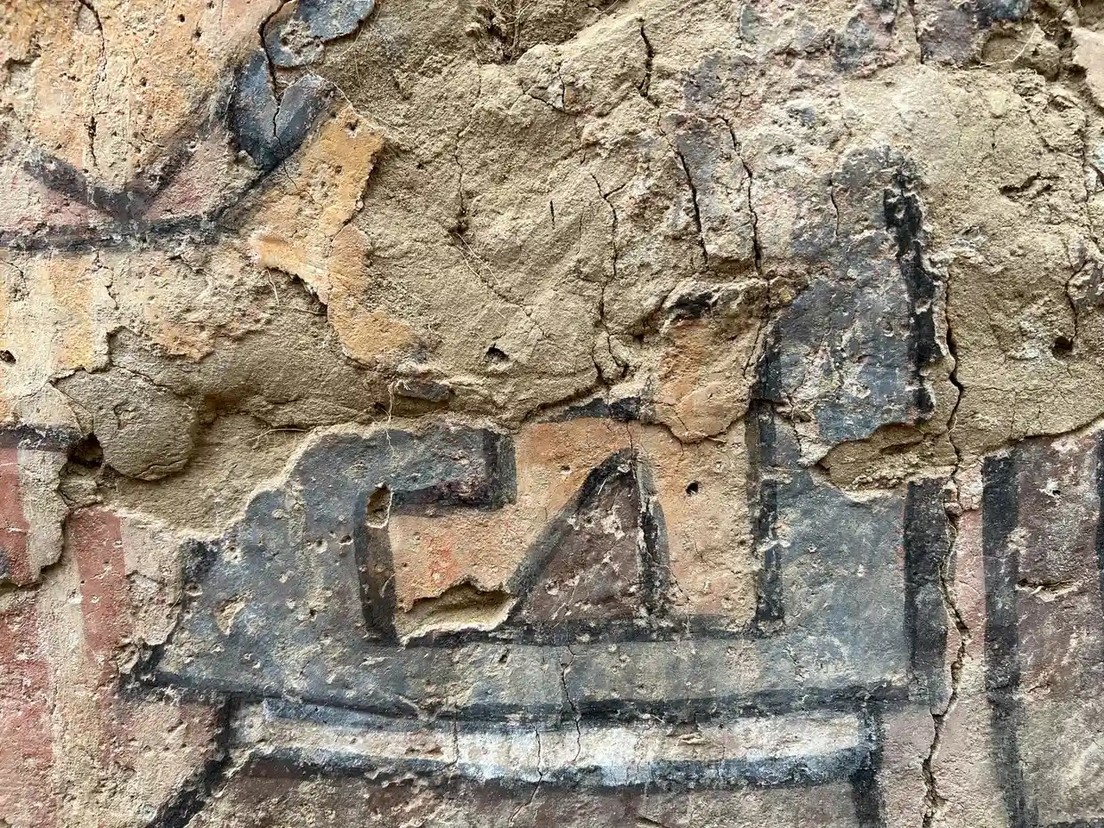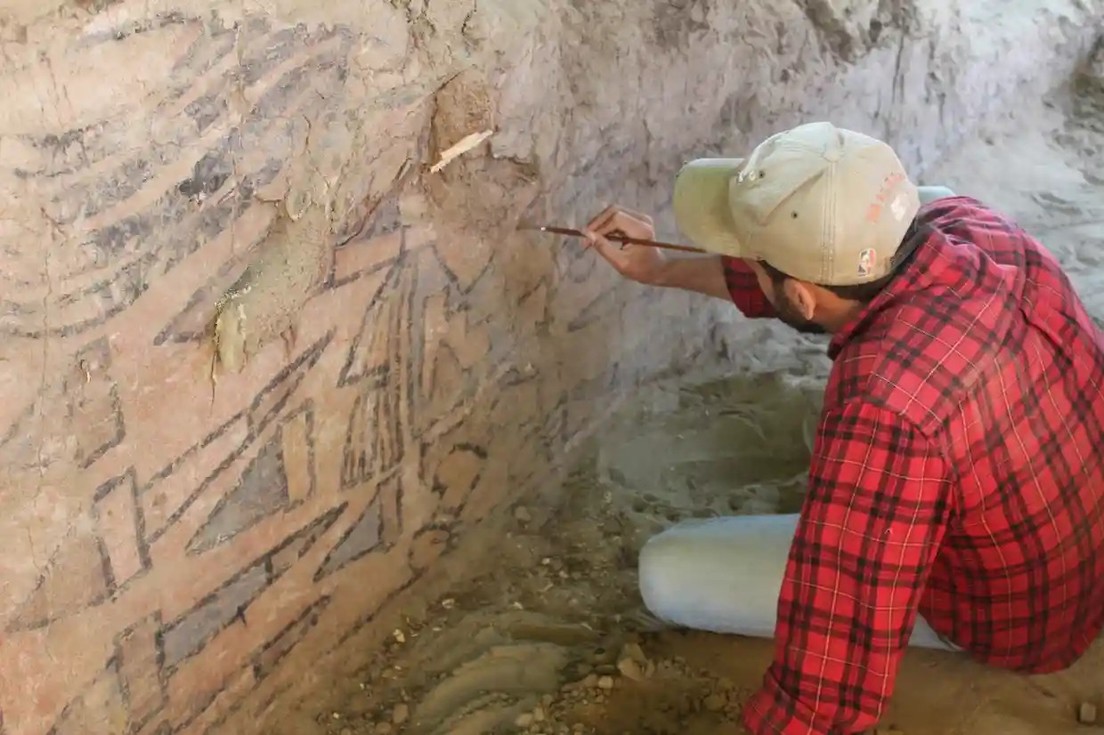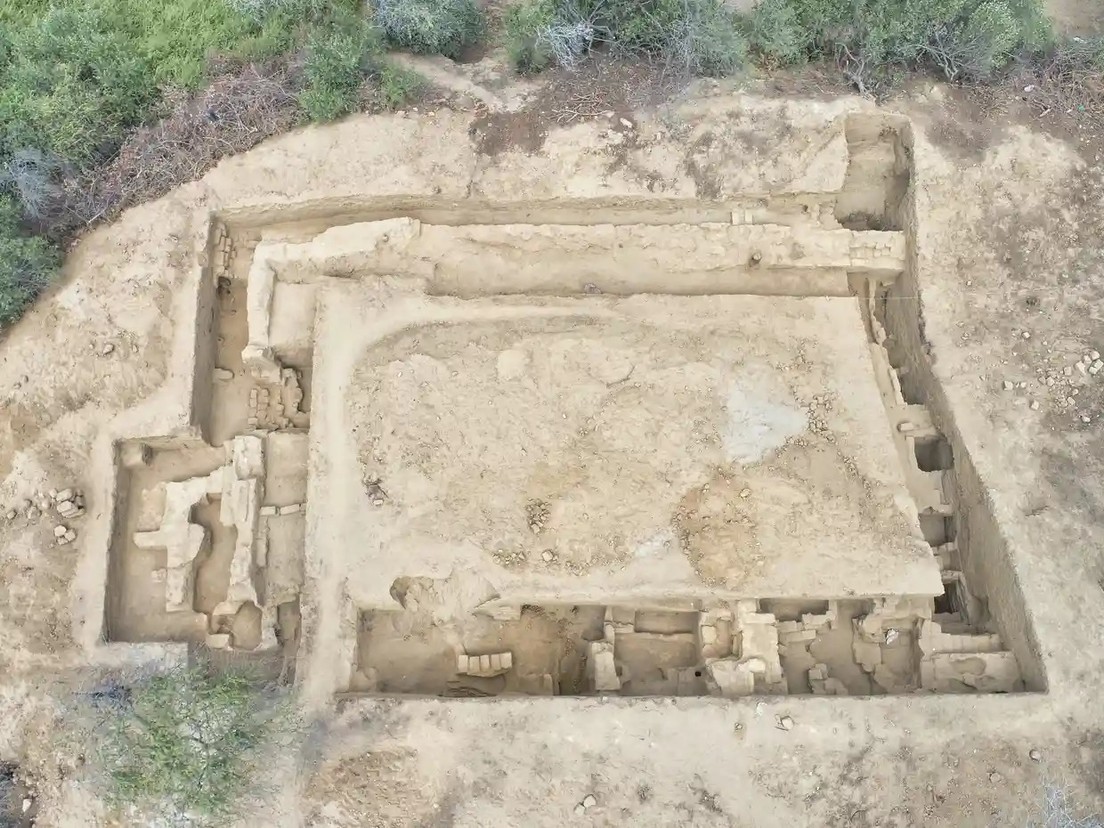 A team of archeology students has rediscovered in northern Peru a mural painted with spectacular images depicting mythical scenes from a thousand years old and which was last seen a century ago, reports the local press.
A team of archeology students has rediscovered in northern Peru a mural painted with spectacular images depicting mythical scenes from a thousand years old and which was last seen a century ago, reports the local press.
The 30-meter-long multicolored wall, known as the Huaca Pintada, was first found in 1916 by a band of treasure-seeking tomb raiders in the Illimo district of Peru's Lambayeque province.

At that time, the work did not suffer considerable damage from the bandits, because their activity in the area was stopped by the local authorities.
Meanwhile, the German engineer Hans Hinrich Bruning, who had been in the Latin American country for about 40 years studying ethnography and archaeology, managed to photograph the mural, which soon fell into oblivion, in such a way that, after more than a century, the new generation only had the name of the lost artifact and some black and white images.

In 2019, a Swiss-Peruvian research group led by Sâm Ghavami, from the University of Friborg (Switzerland), who dedicated his doctoral thesis to "the sociocultural changes that occurred at the end of the Middle Horizon in Lambayeque" and launched to explore the site, excavated search and investigate the Huaca Pintada.
After a pause in 2020 due to the COVID-19 pandemic, they were able to resume their work in 2021 completing the excavation this November.
Ghavami reveals that, thanks to Brunning's photographs and his field notebooks, the Peruvian anthropologist Richard Schaedel, from the US, sketched a drawing of the iconographic composition of the Huaca Pintada. The young scientist revealed that the mural shows a procession of warriors finely dressed and armed with batons parading to present their offerings before a divinity.

"My objective was to prove if any trace of the prestigious wall still survived. The value of the mural is not only aesthetic, since the mestizo style of the painting, showing elements of both the Lambayeque culture and archaisms of its Mochica ancestors, made it clear that the Huaca Pintada could be the scene of the formation process of a major cultural phenomenon," the researcher explained the value of the artifact.
When the group discovered the remains of the wall, they noted that the Huaca still preserves its original colors: red, yellow, lucuma, white, black, brown and blue, while "the excavation carried out by the huaqueros had found only a few panels of the mural Ghavami detailed.
In the future, the Swiss researcher plans to dedicate himself fully to finishing his thesis and teaching the history of the peoples of northern Peru and their culture at a university in Switzerland, continuing along with his research. (Text and photos: RT in Spanish)